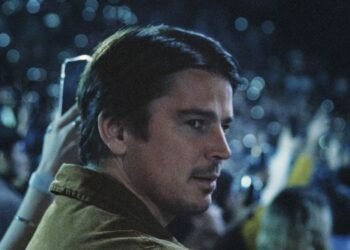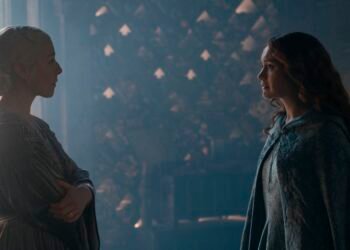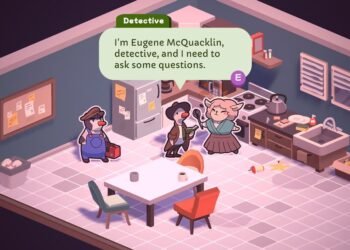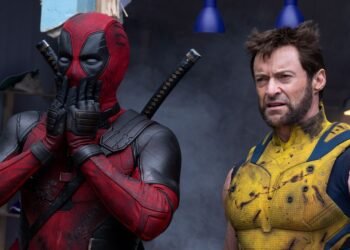The second level of Super Mario Bros. Wonder is a musical. Or, to be precise, it can be a musical. Whether or not the universe breaks into song depends on which words of the title “Super Mario Bros. Wonder” you prefer.
If you’re here for the “Super Mario Bros.” of it all, this level (and every level) can be enjoyed as a loyal continuation of the plumber’s work in the 2D platformer genre that has maintained a healthy and consistent cadence since the series debuted in 1985. Dash from left to right, jump over pits, concuss enemies, collect the occasional power-up, and after a few minutes of adventuring ever eastward, leap onto the flagpole that ends one level and unlocks the next.
But, if you’re curious about the “Wonder” — if you’re not too precious about video game tradition — you can find within each Wonder stage a Wonder Seed, a Mario-sized ball of botany that morphs the environment into something indeed quite wonderful. Like a musical number.
To choose wonder is to flood the atmosphere with lava-lamp plasma, send gravity into convulsions, or transform your hero into any variety of creatures — or even inanimate objects. As my stoned college roommate once postulated while ripping an apple bong: “You always see the scenery, but have you ever wanted to be the scenery?” Reader, he dreamt so we could live. For a moment, Mario gets to be the background.

Image: Nintendo EPD/Nintendo via Polygon
The brilliance of Super Mario Bros. Wonder is that the choice is one of “and,” not of “or.” The traditional and the topsy-turvy coexist. Across six worlds, the creators of Wonder offer a menu of familiar stages that, should you like, can be prepared with extra spice — or paired with the family-friendly equivalent of ayahuasca. That particular drug comparison isn’t flippant: At one point Toad licks the ol’ Wonder Seed, and suddenly he’s riding a dragon.
Wonder Seeds can add a splash of difficulty, but help is perpetually available in a fashion that’s considerate rather than patronizing. Gone are time limits. Extra lives can be purchased at a low cost with the game’s abundant purple currency. A new badge system allows players to select from a growing collection of special abilities that range from helpful (a high, floating leap) to playful (a Piranha Plant grappling hook) to silly (a triple jump tied to a musical rhythm).
Each unlockable upgrade or special move is assigned to a badge that can be found or purchased. One collected badge can be selected before each stage, so I found myself rotating abilities based on need. For example, when later stages added a bunch of instant-death bottomless pits, I opted for the Safety Bounce badge: When I plunge into an abyss, the darkness spits me up like a piece of hamburger caught in its throat.
I expect many players will brag that their favorite badge is the “overpowered one,” which is sort of always true. No matter what you use, you will feel like you’ve been given an unfair advantage as you casually float over chunks of the stage or vacuum coins through walls. To maintain balance, the designers layered on new challenges, keeping Wonder within the Goldilocks window. Not too hard, not too easy. Just right.
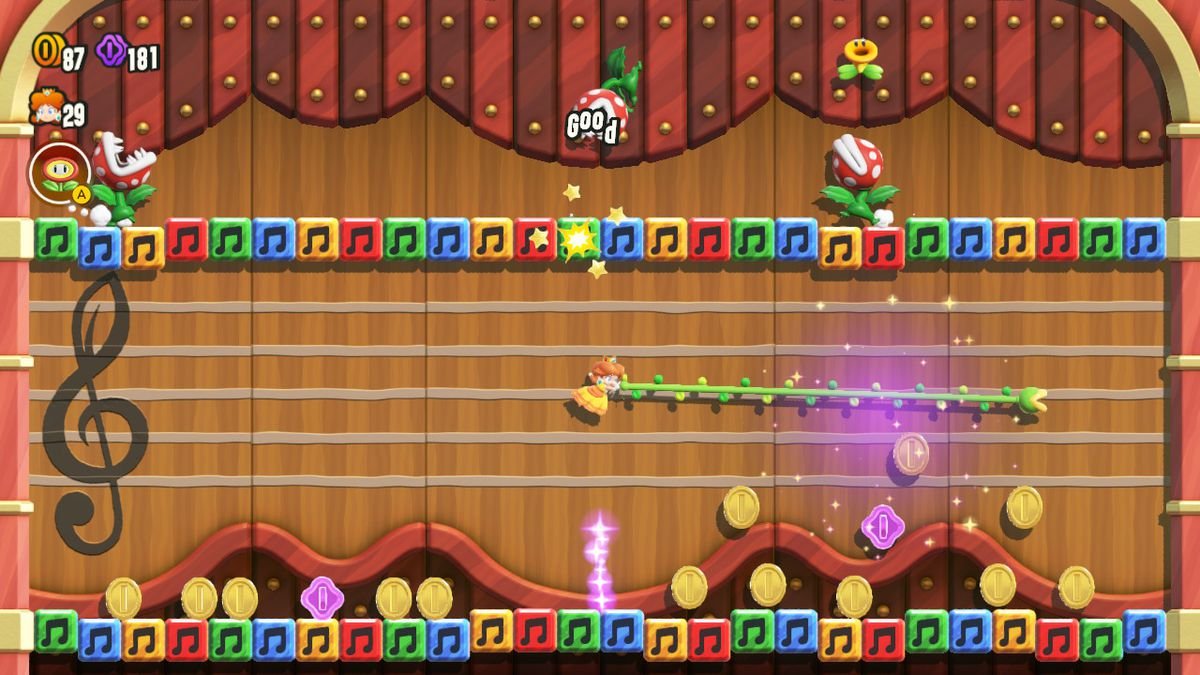
Image: Nintendo EPD/Nintendo via Polygon
The wonder of playing Super Mario Bros. in 1985 came from the discovery. Nintendo not only predicted players would climb outside the confines of the level, it placed shortcuts in the hidden crevices to reward the most rule-breaking players. Badges cleverly build upon that sense of freedom with skills that let you soar over towering enemies or use that Piranha Plant grappling hook to climb high above the confines of the stage — now a Mario tradition.
And sometimes Wonder goes further. With Wonder Seeds, the levels themselves collapse and contort, disobeying the laws established by decades of Mario games. Giant, sudsy, rainbow-tinted bubbles fill a stage and burst through the ceiling; a colossal snowball knocks down a flagpole, extending the stage beyond its official conclusion.
This is the most significant difference between 1985 and 2023: Mario’s creators have joined in the fun of breaking the machine.
Play Mario for the first time a second time
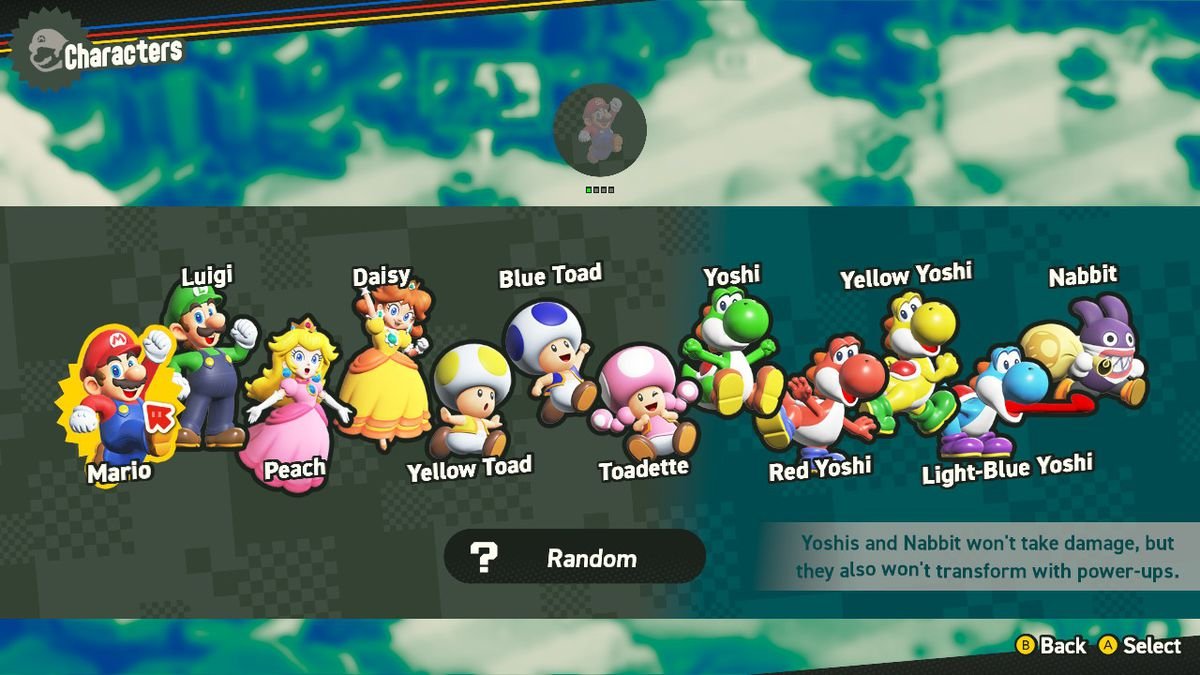
Image: Nintendo EPD/Nintendo via Polygon
Middle-aged Mario fans (read: me) have speculated since its announcement that Wonder could be the first “true new Mario game” since Super Mario World in 1990.
To younger (or just less obsessive) readers, that theory might sound strange. Nintendo has released many iterative entries of Mario — including the cheekily named New Super Mario Bros. series. However, for the village elders, the first four 2D Mario games stand apart.
With each Super Mario Bros. on the NES and SNES, Nintendo’s designers learned from the previous entry, cutting what didn’t work, making audacious additions (there was a time when adding a dinosaur named Yoshi felt like a gimmick!), and gradually accumulating the pieces and tropes that would appear in every game for the following 30-plus years.
Then, with Super Mario 64, 3D Mario games became the de facto labs for Nintendo’s greatest experimentation: Magical hats! Water guns! Galactic travel! 2D Mario, conversely, defaulted to a vessel for nostalgia.
I can say with confidence that Wonder shares those early games’ inventiveness, and their disregard for what should and shouldn’t be in a Mario game. When playing Wonder, I’ve imagined how it came to be: In my fantasy, since the ’90s, every time a Nintendo developer had an idea that “didn’t fit the tone” or “wasn’t Mario enough,” they wrote it into a notebook. And eventually, with no space left, someone had the gall to say, “Let’s turn this stuffed notebook of chaos into a game. Because why shouldn’t Mario be an elephant? Why shouldn’t Wigglers wear roller skates? And why shouldn’t Luigi skydive?”

Image: Nintendo EPD/Nintendo via Polygon
Wonder’s creators have so many new ideas to share that their creativity is unapologetically wasteful, which I say as a compliment. Many gimmicks in Super Mario Bros. Wonder could be stretched to fill entire games, but here, we’re lucky to see them last a few minutes.
For example, one stage might feature platforms that drop when you step on them. The next stage will feature platforms that drop, but only after you’ve jumped on them a certain number of times — a countdown clock at their center. After that, the stage will have platforms made of batteries, each dropping as it runs out of energy. And then, to wrap things up, there will be a stage in which you build the stage out of huge batteries of different shapes, the platform rapidly growing and shrinking as it skims above a yawning abyss.
In the current era of AAA “forever games” filled with endless lists of chores and artificial rewards, Wonder’s willingness to juice each idea of its fun, then toss the rind in the trash, is a potent alternative. The reward isn’t XP or limited-edition outfits. It’s the play itself.

Image: Nintendo EPD/Nintendo via Polygon
Don’t mistake the creative abundance (and refusal to wear out one’s welcome) for a short game. Levels are everywhere. Wonder’s map features six worlds, but levels can also be found in the hub area, along with… to avoid spoilers, let’s just say elsewhere. The familiar rhythms of a Mario game have been broken, with bosses appearing without warning, some worlds ending with no boss fight at all, and the occasional surprise stage that materializes like a mirage.
Whether or not Super Mario Bros. Wonder is the unofficial Super Mario Bros. 5 that dorks like me have long wanted, I’ll leave to the forums. But I will say this: What a joy it is to play a Mario game and not already know how to read it, to not have my muscle memory do more work than my brain.
With rumors that the Nintendo Switch’s successor could arrive early next year, I would be fine if Wonder were this console’s last big release. To survive after the Wii U, Nintendo had to bring together its console and handheld designers and create something unlike anything on the market, without sacrificing what had gotten the company to that point. As the sun sets on the Switch, after an unprecedented run of success, along with arguably the best entries in many of the company’s biggest franchises, we get Super Mario Bros. Wonder.
Like the Switch itself, Wonder is a collision between the traditional and the new. A game that’s the same as it ever was and nothing like Mario has ever been.
Super Mario Bros. Wonder will be released Oct. 20 on Nintendo Switch. The game was reviewed on Nintendo Switch using a pre-release download code provided by Nintendo. Vox Media has affiliate partnerships. These do not influence editorial content, though Vox Media may earn commissions for products purchased via affiliate links. You can find additional information about Polygon’s ethics policy here.




































